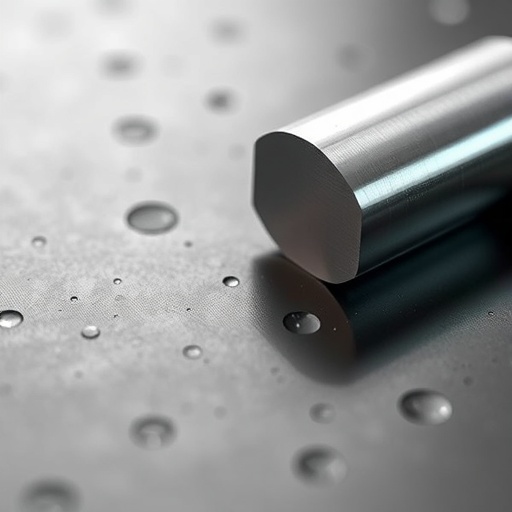As the global community intensifies efforts to achieve carbon neutrality, hydrogen stands at the forefront as a clean and versatile energy carrier. Renowned for producing only water upon consumption, hydrogen promises a revolutionary shift in decarbonizing sectors such as industry, power generation, and transportation. Yet, harnessing this potential demands the development of resilient infrastructure capable of withstanding the unique challenges posed by hydrogen’s chemical nature, particularly its interaction with metals.
One of the most pressing technical challenges in this realm is hydrogen embrittlement—a phenomenon that drastically reduces the mechanical integrity of metals exposed to hydrogen environments. This degradation, especially pronounced in high-strength steels utilized in hydrogen transport and storage, leads to the formation of cracks and catastrophic failures. While the core mechanisms of hydrogen embrittlement have been studied primarily in bulk materials, the influence of surface conditions on these atomic-scale degradation processes remains inadequately understood, leaving a critical knowledge gap in materials engineering.
In a groundbreaking study led by Assistant Professor Luca Chiari of Chiba University’s Graduate School of Engineering, researchers have provided the first experimental insights that connect surface roughness to hydrogen-induced defect formation at the atomic level. Published online on September 2, 2025, and featured in the September 24, 2025 issue of the International Journal of Hydrogen Energy, this work elucidates how routine metal finishing processes—ranging from polishing to grinding—profoundly influence hydrogen embrittlement susceptibility by altering defect structures near the metal’s surface.
The team meticulously prepared high-purity iron samples exhibiting four distinct levels of surface roughness through standardized mechanical polishing. These samples were then exposed to simultaneous mechanical tension and hydrogen charging, achieved via immersion in an electrolytic solution coupled with an electrical current. This dual-stress environment facilitated the generation of hydrogen-induced defects, such as dislocations and vacancy clusters, replicating real-world conditions faced by hydrogen infrastructure materials.
Central to the success of this investigation was the use of positron annihilation lifetime spectroscopy (PALS), a cutting-edge technique that employs positrons—antimatter counterparts of electrons—as ultrasensitive probes. When directed into the metallic samples through a slow positron beam, these particles selectively annihilate at defect sites, allowing researchers to precisely measure defect types, sizes, and distributions within the shallow near-surface regions. This approach offers a non-destructive and unparalleled resolution of defect characterization exclusively at the critical interface where hydrogen embrittlement initiates.
Experimental results revealed a direct correlation between surface roughness and the volumetric growth of vacancy clusters induced by hydrogen. Specifically, iron samples with rougher surfaces exhibited substantially larger vacancy clusters, containing a greater number of atomic vacancies, compared to their smoother counterparts. Intriguingly, this effect was localized strictly to the near-surface region, with the defect size profile in the bulk of the material remaining unchanged regardless of polishing methods.
This critical finding suggests that the mechanical deformation associated with polishing and grinding induces a dense network of dislocations near the metal surface, which act as potent hydrogen traps. These super-concentrated hydrogen reservoirs facilitate the agglomeration of atomic vacancies into larger clusters—defects known to be precursors for crack formation and propagation. Consequently, surface topography emerges as a macroscopic variable directly governing microscopic defect evolution and, by extension, material failure modes under hydrogen exposure.
The implications of this study extend far beyond academic curiosity. By establishing a clear link between surface engineering and atomic-scale defect formation, the research paves the way for novel metallurgical strategies aimed at mitigating hydrogen embrittlement. Engineers and materials scientists may soon harness precision surface finishing techniques to design metals with inherently reduced susceptibility to hydrogen-induced damage, thus enhancing the longevity and safety of hydrogen energy infrastructure.
Dr. Chiari emphasizes the transformative potential of this approach, noting, “Our findings offer a fundamental understanding of hydrogen embrittlement that could significantly cut life-cycle costs for materials operating in hydrogen-rich environments.” This calibration of surface roughness not only optimizes mechanical reliability but also aligns seamlessly with sustainability goals by reducing the need for frequent replacements or repairs.
Furthermore, the pioneering application of PALS highlights a new frontier in materials science diagnostics. Dr. Chiari envisions this technology becoming a standard tool for certification and in-service inspection, offering an unprecedented molecular-level screening mechanism for hydrogen infrastructure components. This paradigm shift could catalyze a new era of proactive maintenance and quality assurance in industries embracing hydrogen technologies.
In essence, this research marks a formidable leap toward establishing robust, scientifically informed guidelines for material design in the burgeoning hydrogen economy. As nations worldwide accelerate their transition to sustainable energy sources, the insights from this study equip stakeholders with the knowledge to build safer, more reliable hydrogen systems resistant to one of their most stubborn vulnerabilities.
Assistant Professor Luca Chiari’s team’s thorough exploration into the nexus between surface topography and defect kinetics invites a broader reconsideration of traditional manufacturing practices. By integrating atomic-scale insights with mechanical processing parameters, the study exemplifies the critical role of interdisciplinary innovation in overcoming challenges that stand between theoretical promise and practical deployment of green energy solutions.
This body of work underscores that the future of hydrogen infrastructure is not solely reliant on discovering new materials but also on mastering the subtleties of surface science. As industries look to implement hydrogen at scale, such precision engineering will become indispensable, transforming how materials are developed, certified, and maintained for decades to come.
Subject of Research: Not applicable
Article Title: Defect analysis of surface-polished hydrogen-charged pure iron by positron annihilation lifetime spectroscopy
News Publication Date: 24-Sep-2025
Web References:
https://www.sciencedirect.com/science/article/abs/pii/S0360319925041308?via%3Dihub
http://dx.doi.org/10.1016/j.ijhydene.2025.151128
Image Credits: Assistant Professor Luca Chiari from Chiba University, Japan
Keywords: hydrogen embrittlement, surface roughness, vacancy clusters, positron annihilation lifetime spectroscopy, pure iron, defect analysis, materials science, hydrogen infrastructure, atomic-scale defects, mechanical polishing, hydrogen-induced damage, surface engineering
Tags: advancements in engineering for carbon neutralityatomic-scale degradation processesclean energy and hydrogen technologydecarbonization and hydrogen solutionsexperimental insights in materials sciencehydrogen embrittlement in metalshydrogen transport infrastructurehydrogen-induced defect formationmaterials engineering challengesmechanical integrity of high-strength steelsresilience of materials in hydrogen environmentssurface roughness and hydrogen interaction





